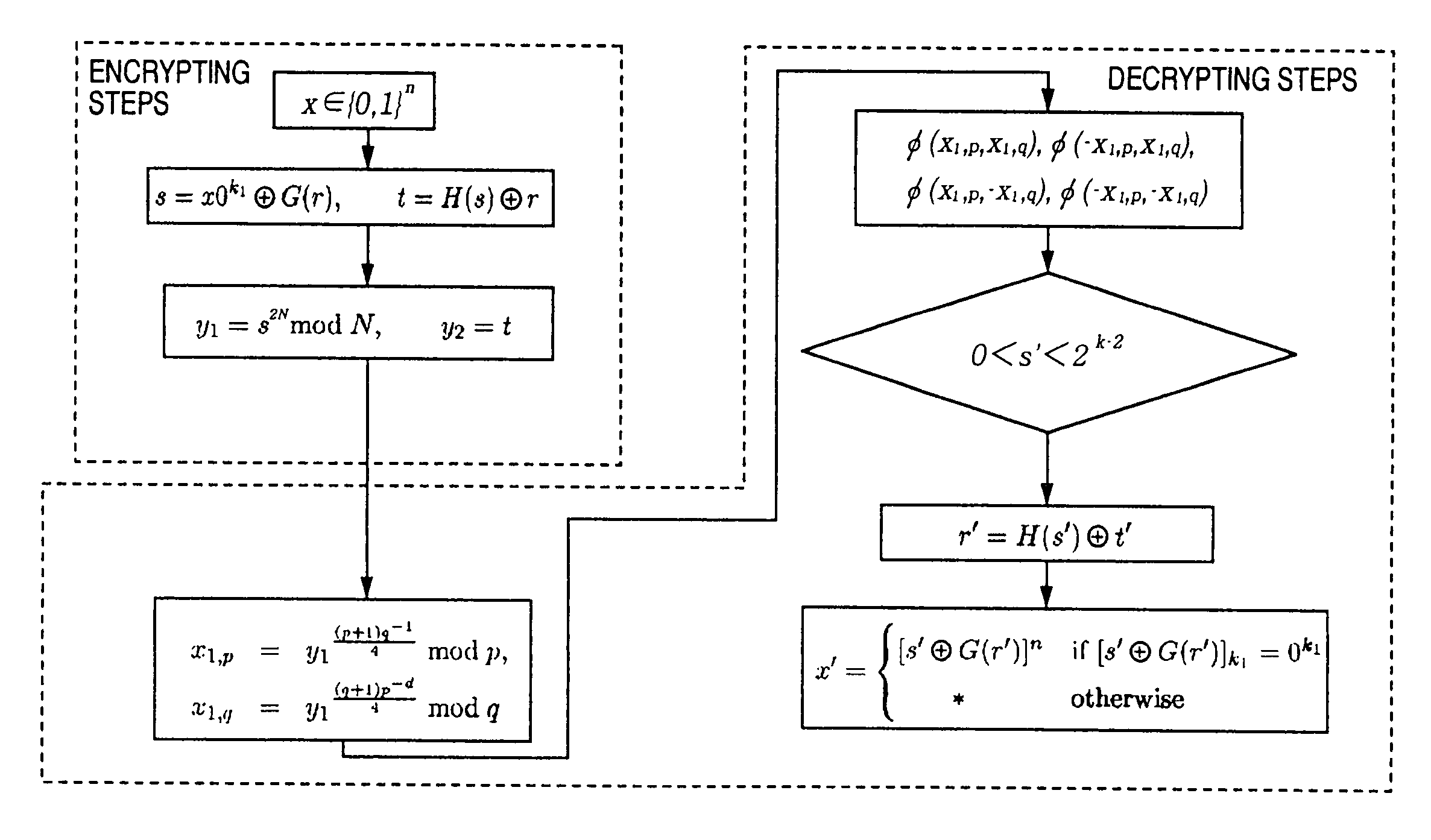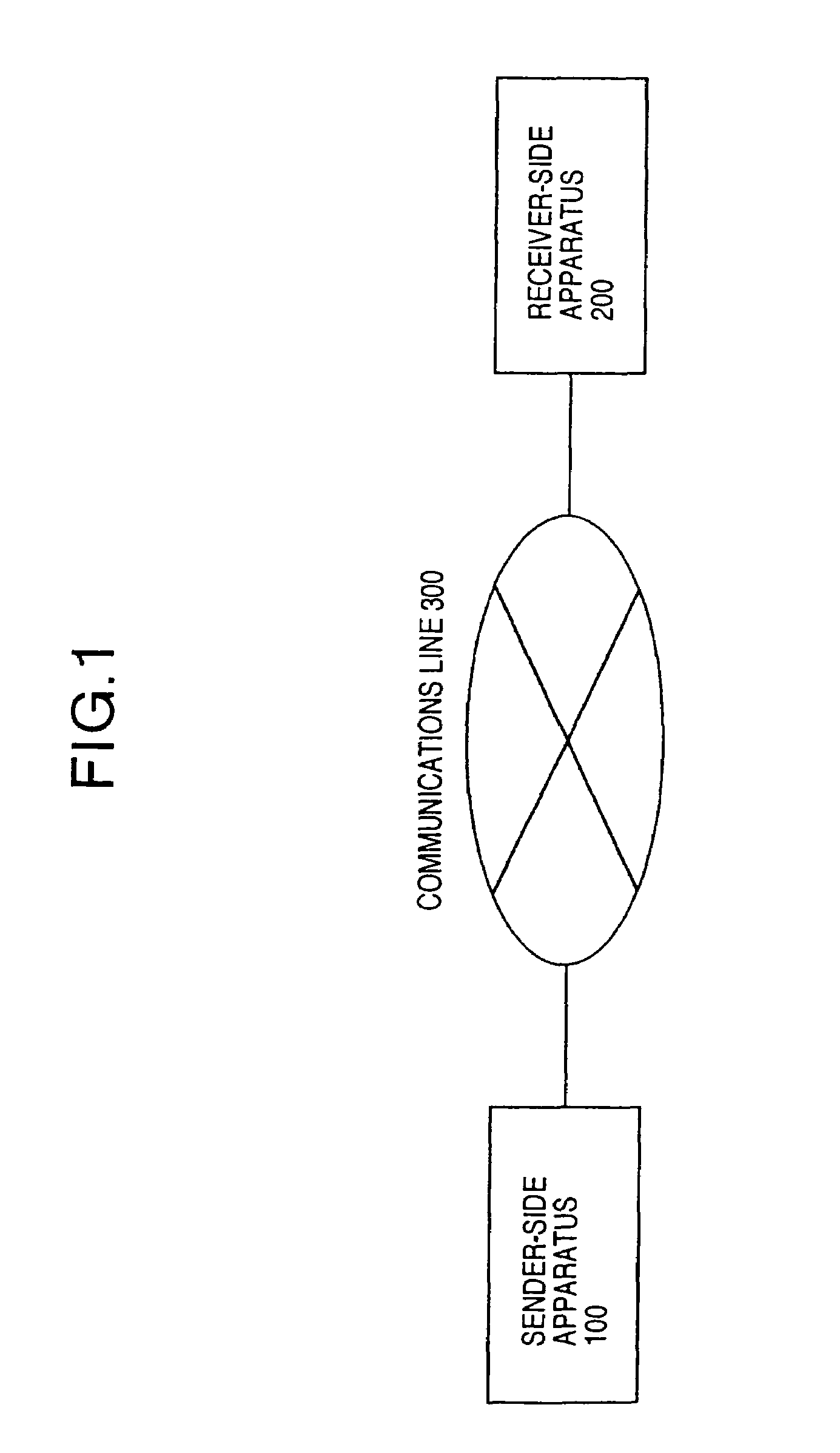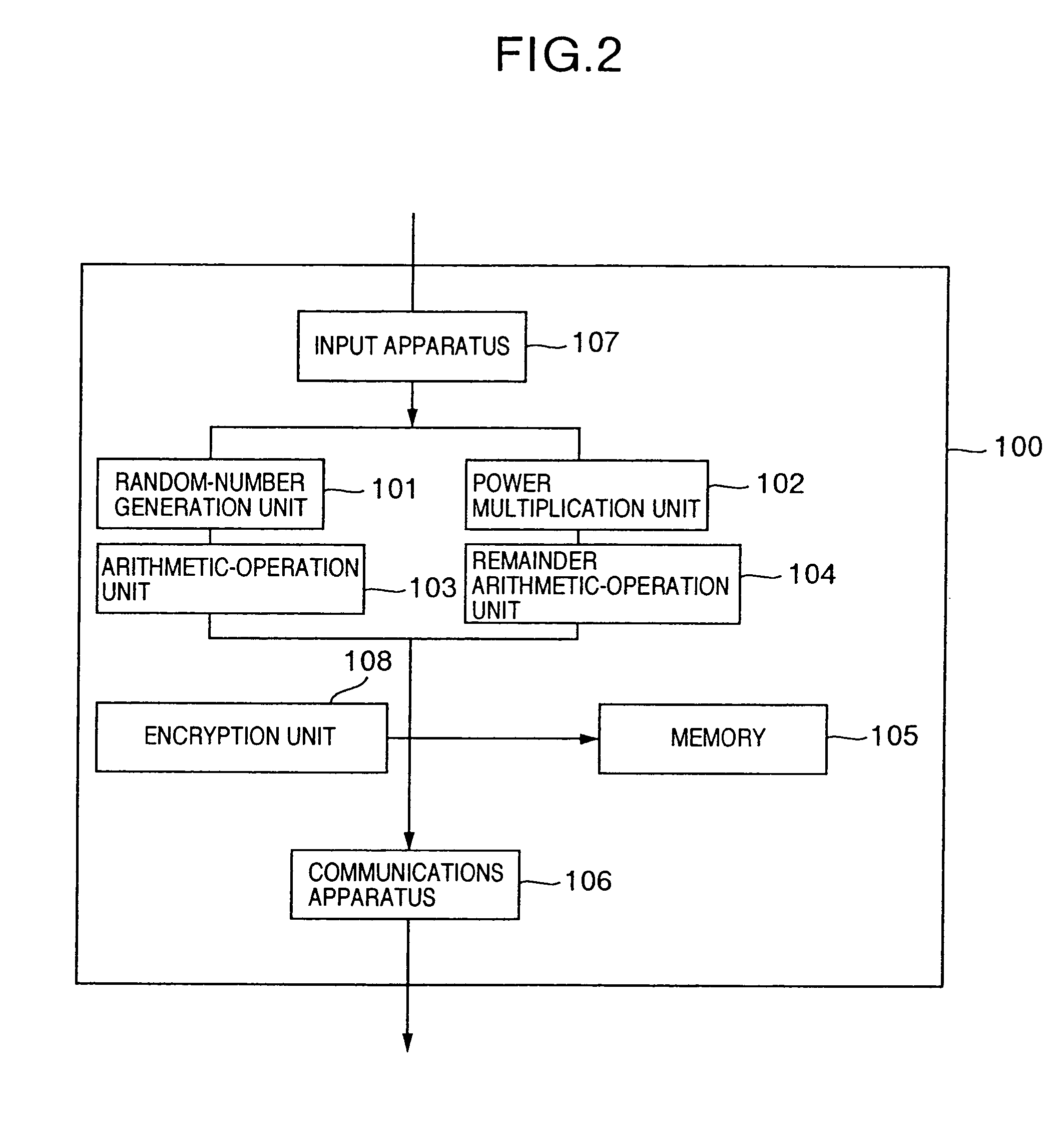Method of a public key encryption and a cypher communication both secure against a chosen-ciphertext attack
a public key encryption and cypher technology, applied in the field of cipher communication methods, can solve the problems of inability to implement high-speed decryption processing, inability to achieve high-speed decryption processing, and inability to secure the public key for secure communication
- Summary
- Abstract
- Description
- Claims
- Application Information
AI Technical Summary
Benefits of technology
Problems solved by technology
Method used
Image
Examples
1st embodiment
[0065]In the present embodiment, the explanation will be given below concerning the case where, via a cipher communication, the sender of a plaintext (which is also referred to as “message”) transmits, to the receiver, the message becoming the transmission data.
[0066]FIG. 1 illustrates the system configuration in the present embodiment. Also, FIG. 4 is a diagram for illustrating the outline of the processing steps in the 1st embodiment.
[0067]Using the key generation unit 201 in the receiver-side apparatus 200, the receiver creates, in advance, a public key given by
f:{0,1}k→{0,1}k one-way trapdoor permutation,
G:{0,1}k0→{0,1}n+k1 hash function,
H:{0,1}n+k1→{0,1}k0 hash function (1)
and a secret key given by
f−1:{0,1}k→{0,1}k Trapdoor function (2)
(where, k=k0+k1+n). Also, the publication information is outputted via the communications line 300 or the like, then being sent to the sender-side apparatus 100 or being published. As the publishing method, a well-kn...
2nd embodiment
[0074]In the present embodiment, the more concrete explanation will be given below concerning the method according to the 1st embodiment. FIG. 5 is a diagram for illustrating the outline of the steps in the 2nd embodiment.
[0075]Using the key generation unit 201 in the receiver-side apparatus 200, the receiver creates, in advance,
a secret key (p, q) given by
p, q: prime numbers,
p≡3(mod 4), q≡3(mod 4) (8)
a public key (N, k, G, H) given by
N=pdq (d is odd number)
k=|pq|
G:{0,1}k0→{0,1}n+k1 hash function,
H:{0,1}n+k1→{0,1}k0 hash function (9)
Here, it is stipulated that the manager or the receiver of the present system has determined the value of d in advance or as required, and that the above-described key generation unit fetches the value.
[0076]Also, the publication information is outputted via the communications line 300 or the like, then being sent to the sender-side apparatus 100 or being published. As the publishing method, the well-known method, e.g., the ...
3rd embodiment
[0087]In the present embodiment, the explanation will be given below regarding a modified example of the 2nd embodiment. FIG. 6 is a diagram for illustrating the outline of the steps in the 3rd embodiment.
[0088]Using the key generation unit 201 in the receiver-side apparatus 200, the receiver creates, in advance,
a secret key (p, q) given by
p, q: prime numbers,
p≡3(mod 4), q≡3(mod 4) (15)
a public key (N, k, G, H) given by
N=pdq (d≧1)
k=|pq|
G:{0,1}k0→{0,1}n+k1 hash function,
H:{0,1}n+k1→{0,1}k0 hash function (16)
Here, it is stipulated that the manager or the receiver of the present system has determined the value of d in advance, and that the above-described key generation unit can use the value. Also, the publication information is outputted via the communications line 300 or the like, then being sent to the sender-side apparatus 100 or being published. As the publishing method, the well-known method, e.g., the registration into the third party (i.e., the pu...
PUM
 Login to View More
Login to View More Abstract
Description
Claims
Application Information
 Login to View More
Login to View More - R&D
- Intellectual Property
- Life Sciences
- Materials
- Tech Scout
- Unparalleled Data Quality
- Higher Quality Content
- 60% Fewer Hallucinations
Browse by: Latest US Patents, China's latest patents, Technical Efficacy Thesaurus, Application Domain, Technology Topic, Popular Technical Reports.
© 2025 PatSnap. All rights reserved.Legal|Privacy policy|Modern Slavery Act Transparency Statement|Sitemap|About US| Contact US: help@patsnap.com



